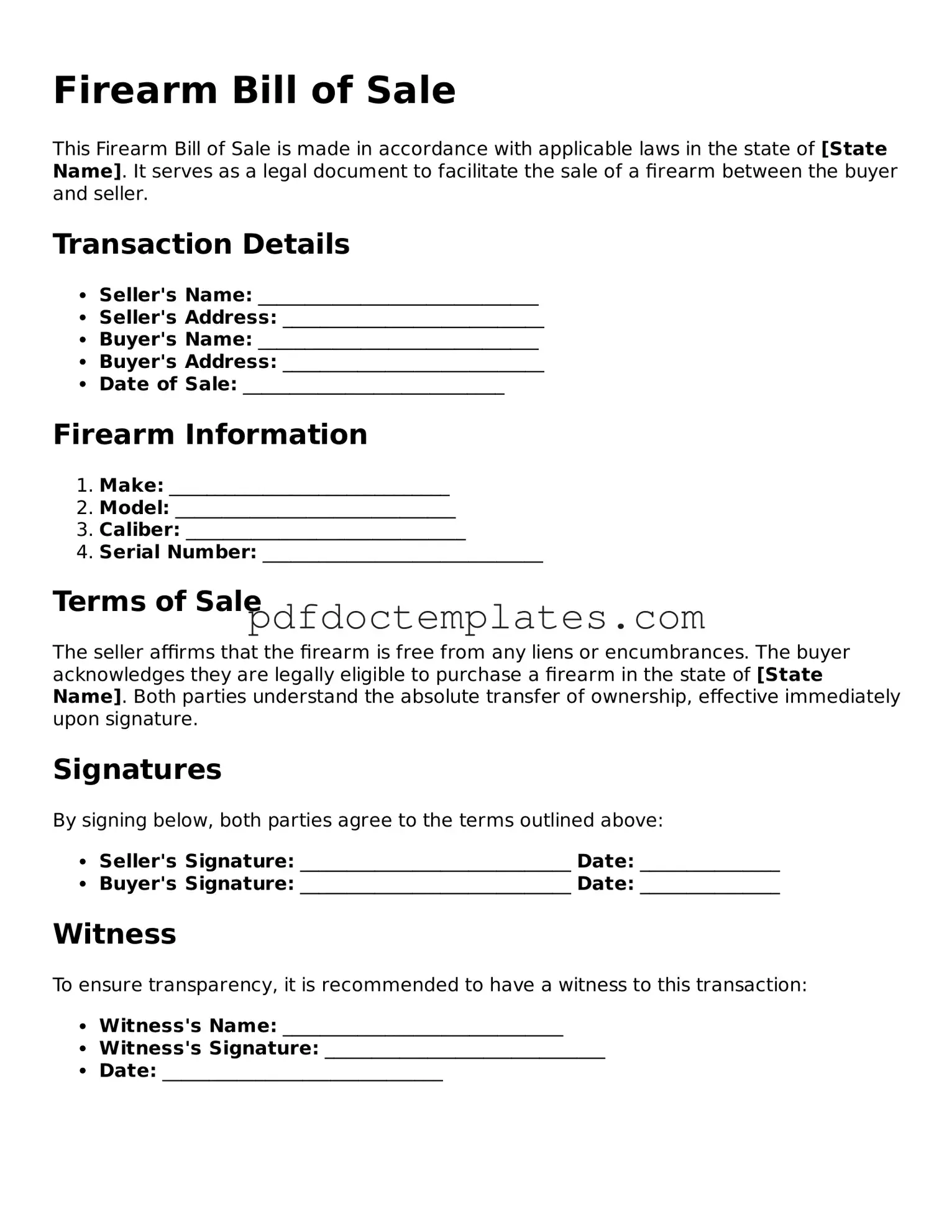Firearm Bill of Sale
This Firearm Bill of Sale is made in accordance with applicable laws in the state of [State Name]. It serves as a legal document to facilitate the sale of a firearm between the buyer and seller.
Transaction Details
- Seller's Name: ______________________________
- Seller's Address: ____________________________
- Buyer's Name: ______________________________
- Buyer's Address: ____________________________
- Date of Sale: ____________________________
Firearm Information
- Make: ______________________________
- Model: ______________________________
- Caliber: ______________________________
- Serial Number: ______________________________
Terms of Sale
The seller affirms that the firearm is free from any liens or encumbrances. The buyer acknowledges they are legally eligible to purchase a firearm in the state of [State Name]. Both parties understand the absolute transfer of ownership, effective immediately upon signature.
Signatures
By signing below, both parties agree to the terms outlined above:
- Seller's Signature: _____________________________ Date: _______________
- Buyer's Signature: _____________________________ Date: _______________
Witness
To ensure transparency, it is recommended to have a witness to this transaction:
- Witness's Name: ______________________________
- Witness's Signature: ______________________________
- Date: ______________________________
